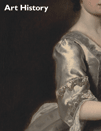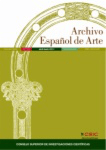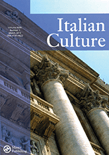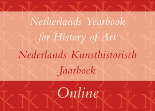
Iconographica
metrics 2024
Advancing Scholarly Discourse in Visual Culture
Introduction
Iconographica is an esteemed journal published by SISMEL EDIZIONI GALLUZZO, dedicated to the exploration of cultural narratives through visual arts and performing arts. Based in Italy, this journal has been providing a platform for scholarly discourse from 2015 to 2023, and it serves as an important resource for researchers, professionals, and students interested in these interdisciplinary fields. Although indexed in the Q4 quartile for both Cultural Studies and Visual Arts, this journal offers valuable insights that encourage the examination and understanding of visual culture. While currently operating without an open access model, its rigorous peer-review process ensures high-quality academic contributions that reflect the evolving dynamics within these areas of study. Set against the backdrop of a rapidly transforming cultural landscape, Iconographica aims to foster engagement, inspire innovative perspectives, and cultivate a deeper appreciation for the interplay between culture and visual representation.
Metrics 2024
 0.10
0.10 -
- -
- 2
2Metrics History
Rank 2024
Scopus
JCI (Web Of Science)
Quartile History
Similar Journals

Artibus et Historiae
Cultivating Knowledge in the Arts and HumanitiesArtibus et Historiae is a distinguished academic journal published by IRSA PUBLISHING HOUSE, focusing on the fields of Visual Arts and Performing Arts within the broader scope of Arts and Humanities. With an ISSN of 0391-9064, this journal has become a crucial platform for the dissemination of scholarly research, critical discourse, and innovative ideas in art history and visual culture. Though its coverage in Scopus was discontinued in 2018, it maintained a respectable ranking of #279 out of 502 in its category, placing it in the 44th percentile. This positions Artibus et Historiae as a respected contributor to scholarly conversations in its field. Researchers, professionals, and students will find valuable insights and analyses that deepen their understanding of artistic practices and historical contexts. While not an open-access journal, it aims to bridge the gap between academia and broader audiences interested in the dynamic interplay of art and history.

ART HISTORY
Celebrating the Diversity of Artistic Expression Through the AgesART HISTORY is a prestigious journal published by Wiley, focusing on the dynamic and diverse field of visual arts and performing arts since its inception in 1978. With an ISSN of 0141-6790 and an E-ISSN of 1467-8365, the journal has established itself as a significant resource for researchers, professionals, and students interested in exploring the complexities of art across various epochs and cultures. Currently ranked in the Q3 category within the Visual Arts and Performing Arts sector and positioned at #132 out of 667 in Scopus rankings—representing the top 80th percentile—ART HISTORY delivers insightful scholarship that contributes to the understanding and appreciation of art history. Although it does not offer open access, the journal remains committed to publishing high-quality, peer-reviewed articles that delve into critical artistic practices, theories, and aesthetics. The journal's location in the United Kingdom further enhances its international reach and influence, making it a vital platform for advancing discourse in the arts.

Quiroga-Revista de Patrimonio Iberoamericano
Connecting Cultures: Preserving the Past, Inspiring the FutureQuiroga-Revista de Patrimonio Iberoamericano, published by UNIV GRANADA, is a distinguished open-access journal dedicated to the fields of conservation, museology, and the visual and performing arts. Since its inception in 2012, the journal has provided a platform for scholars and practitioners to disseminate innovative research and critical discussions pertinent to Ibero-American heritage. With a growing impact, evidenced by its category quartiles ranking—Q3 in Conservation and Q2 in both Museology and Visual Arts and Performing Arts—as well as its Scopus rankings, Quiroga serves as an essential resource for researchers, professionals, and students who engage with the complexities of cultural preservation and artistic expression. The journal’s commitment to open access ensures the widespread availability of knowledge, fostering academic dialogue and collaboration within the global community. For inquiries, the journal can be reached at their offices located in Granada, Spain.

STORIA DELL ARTE
Revealing the Stories Behind the CanvasSTORIA DELL ARTE is a notable journal dedicated to the rich exploration of art history and its varied facets, published by LUCA EDITORI ARTE ROMA. With an ISSN of 0392-4513, this publication serves as a vital resource for researchers, professionals, and students in the fields of Visual Arts and Performing Arts. Although the journal's coverage in Scopus has been discontinued from 2014, it has been recognized in the Scopus ranking as positioned within the 31st percentile among 374 entries in its category, highlighting its relevance in the realm of arts and humanities. While it does not offer open access, the journal's commitment to enriching the discourse on art history makes it an essential read for anyone interested in visual culture and historical contexts. Based in the heart of Rome, at VIA NOVELLA, 22, ROMA 00199 RM, ITALY, STORIA DELL ARTE continues to inspire scholarly discussion and contribute valuable insights to the academic community.

ARCHIVO ESPANOL DE ARTE
Bridging Cultures Through Art ResearchARCHIVO ESPANOL DE ARTE is a distinguished journal dedicated to the exploration and dissemination of research in the fields of visual arts and performing arts. Published by CONSEJO SUPERIOR INVESTIGACIONES CIENTIFICAS-CSIC in Spain, this journal has been an open access publication since 1996, facilitating unrestricted access to valuable scholarly content for researchers, professionals, and students alike. With an E-ISSN of 1988-8511 and a commitment to covering a range of artistic phenomena, it plays a significant role in advancing the understanding and appreciation of art within both academic and cultural contexts. Although currently categorized in the Q4 quartile within its discipline, its ranking within Scopus—at #400/667, placing it in the 40th percentile—reflects its contributions to the broader discourse in art research. The journal's suite of open access offerings ensures that cutting-edge research remains accessible, fostering collaboration and innovation in the ever-evolving landscape of the arts.

Quintana-Revista do Departamento de Historia da Arte
Illuminating the Intersection of Art History and Cultural HeritageQuintana-Revista do Departamento de Historia da Arte, published by the Universidade de Santiago de Compostela, is a distinguished academic journal that focuses on the critical analysis and exploration of visual arts and performing arts. With its ISSN 1579-7414 and E-ISSN 2340-0005, this journal serves as a vital platform for researchers, professionals, and students interested in the depth of art history and cultural discourse. Operating under a Q4 category in the realm of Visual Arts and Performing Arts, the journal is committed to fostering scholarly dialogue and advancing knowledge in the field. Though it currently does not offer open access options, it remains an invaluable resource for those aiming to contribute to and understand the evolving landscape of art history. The journal covers converged years from 2011 to 2012 and 2014 to 2024, highlighting its ongoing relevance and adaptability to contemporary discussions. As it continues to enhance its visibility and impact within the 20th percentile of its category according to Scopus rankings, Quintana invites contributions that deepen our understanding of artistic expression and cultural heritage.

Italian Culture
Exploring the Depths of Italian Cultural HeritageItalian Culture is a critical scholarly journal published by Routledge Journals, Taylor & Francis Ltd, focusing on the multifaceted nature of Italian cultural expressions from the 1970s to the present day. With an ISSN of 0161-4622 and an E-ISSN of 1559-0909, this journal serves as an essential platform for researchers and scholars interested in the nuanced dynamics of Italian cultural heritage, sociopolitical contexts, literature, and the visual and performing arts. Despite its current categorization in the Q4 quartile in various fields such as Cultural Studies and Literature, it remains committed to publishing insightful interdisciplinary studies that challenge conventional narratives and contribute to ongoing scholarly discourse. Notably positioned in the United Kingdom, it offers unique perspectives on Italian identity and cultural production, making it a crucial resource for students, professionals, and academics alike. The journal's scope and its convergence of cultural studies will undoubtedly stimulate academic engagement and exploration within and beyond its established readership.

CONNAISSANCE DES ARTS
Exploring the Depths of Visual and Performing ArtsCONNAISSANCE DES ARTS, published by SFPA-CONNAISSANCE ARTS, is a prominent French journal that has been enriching the landscape of Visual Arts and Performing Arts since its inception in 1969. With an ISSN of 0293-9274, this journal offers a platform for critical exploration and scholarly discourse, making notable contributions especially in the realms of art history, criticism, and contemporary artistic practices. Although the journal currently holds a Q4 quartile ranking in its category and ranks in the lower echelon of Scopus ranks (#638 out of 667), its focus on niche topics within the arts makes it a valuable resource for researchers and professionals who seek to engage with less mainstream topics that often go overlooked. The journal publishes insightful articles, reviews, and essays, contributing to the nurturing of artistry and culture in France and beyond. While it is not an open-access publication, the journal remains a significant entity for academics and practitioners keen on advancing their understanding of visual and performing arts. For further engagement with the journal, interested parties can reach out or submit inquiries to its address at 51 RUE VIVIENNE, 75095 PARIS CEDEX 02, FRANCE.

Netherlands Yearbook for History of Art-Nederlands Kunsthistorisch Jaarboek
Decoding the Visual and Performing Arts LandscapeThe Netherlands Yearbook for History of Art-Nederlands Kunsthistorisch Jaarboek, published by BRILL, serves as a critical platform for scholarly discourse in the field of art history, specifically focusing on visual arts and performing arts. With an ISSN of 0169-6726 and an E-ISSN of 2214-5966, this journal fosters a deeper understanding of historical contexts and contemporary issues within the art sector. Although currently categorized in the Q4 quartile of Visual Arts and Performing Arts, it provides valuable insights and promotes interdisciplinary studies that enrich the academic narrative surrounding art history. Researchers, professionals, and students alike will find this journal instrumental in accessing rigorous peer-reviewed articles, case studies, and critical essays that span converged years from 2002 to 2003, 2005 to 2006, 2008 to 2011, 2013 to 2017, and 2019 to 2022. As the realm of art history continues to evolve, this publication remains a vital resource for exploring the cultural significance and historical legacy of artistic practice.

Journal of Mosaic Research
Empowering voices in archaeology and the arts through open access.Journal of Mosaic Research, published by ULUDAG UNIVERSITY, MOSAIC RESEARCH CENTER, is a distinguished open-access journal dedicated to the fields of archaeology, visual arts, and performing arts. Since its establishment in 2019, the journal has been committed to advancing scholarly discourse through innovative research and critical analysis, and it transitioned to an open-access model in 2021 to enhance accessibility and dissemination of knowledge. With an ISSN of 1309-047X, this journal has been recognized for its quality, evidenced by its 2023 rankings which place it in the Q3 quartile for both archaeology and visual arts and performing arts within the Scopus database. Operating from Bursa, Turkey, the journal provides a platform for researchers, professionals, and students to publish their findings, share insights, and engage with contemporary topics in these vital fields of study. As it continues to grow, the Journal of Mosaic Research aims to foster interdisciplinary collaborations and inspire future generations of scholars.